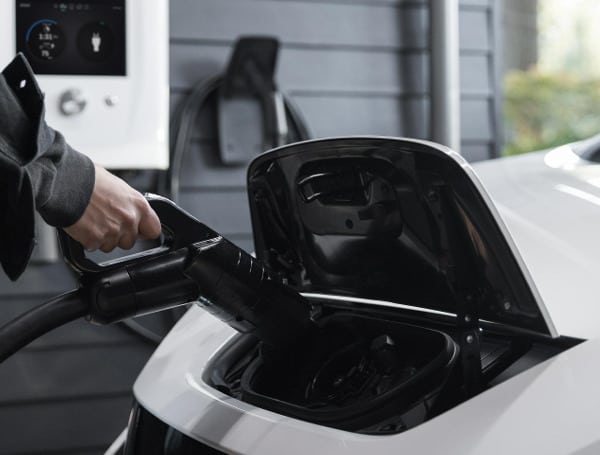Electric vehicle (EV) production is costing most American automobile manufacturers billions of dollars, with a range of factors driving their unprofitability as unionized auto workers are striking to demand more from management.
Companies like Rivian, Ford and General Motors (GM) are currently losing money on each EV that they sell, while Stellantis appears likely to lose money up front on their EVs when they bring them to market in 2024, according to numerous reports.
Rivian has struggled immensely, according to The Wall Street Journal, and the “Big Three” carmakers are facing down the ongoing United Auto Workers (UAW) strike, with the union making demands that threaten to push costs even higher.
The UAW is seeking to exact major concessions, with EVs featuring as a key driver of the labor dispute. Prior to the strike, the average UAW worker in Grass Lake, Michigan, made about $45,000 per year, according to data from ZipRecruiter.
In the news: UAW Strike Costs Billions In Losses With No End In Sight
The UAW is seeking a 36% pay bump over the course of a four-year contract, yearly cost-of-living adjustments, restoration of pre-bailout pension benefits for all of its employees, increased protections to ensure job security, limits on the use of temporary workers and a 32-hour work week, according to CBS News.
EVs have played a crucial role in the labor dispute, as UAW leadership is concerned that a future car market dominated by less-labor intensive EVs will ultimately disadvantage the workers the union represents, according to ABC 27.
If the “Big Three” grants the UAW each of its demands, the average price of EVs could rise by as much as $5,000, according to Business Insider. The average EV already costs about $53,500, compared to the $48,334 average cost of gas-powered vehicles, according to a July 2023 analysis by Kelley Blue Book.
While the UAW is demanding more for its workers, the government-pushed EVs are losing money for America’s manufacturers. Ford lost about $32,000 on each EV it made in the second quarter of 2023, according to Reuters, and the company is anticipating that its EV division could lose $4.5 billion this year alone.
GM’s EV line will operate at a loss until 2025, after which time the company hopes to manufacture about 1 million EVs per year, according to the Associated Press. However, the company’s third quarter financial statements indicate that it is unlikely to meet its EV targets in the near future, according to Fox 59.
Stellantis does not intend to start selling electric vehicles in the U.S. until 2024, according to TheStreet. While there are no precise and credible estimates available yet for how much money the company could initially stand to lose on each EV that rolls off the assembly line, Stellantis CEO Carlos Tavares has warned that higher production costs for EVs could force the company to shut down or idle plants, like it did with its Belvidere, Illinois, facility, according to Reuters.
“If the market shrinks we don’t need so many plants,” Stellantis CEO Carlos Tavares said in January, according to Reuters. “Some unpopular decisions will have to be made.”
Despite not having to wrestle with the implications of the UAW strike, Rivian loses about $33,000 on each $80,000 electric pickup truck it sells, according to The Wall Street Journal. The company, originally founded in 2009, garnered considerable investor interest when it issued its initial public offering (IPO) in 2021, but it is drowning in costs to the extent that it has blown through about half of the cash it raised during its IPO in just under two years.
In the news: Striking UAW Workers In Michigan And Texas Rip Biden’s Push To Force Americans Into EVs
Elon Musk’s Tesla is perhaps the best-positioned of the major EV manufacturers at present. The company, which does not employ union labor, made an average profit of $15,653 on every EV that it manufactured in the third quarter of 2022, according to Reuters.
The Biden administration, recognizing the up-front costs for both EV producers and consumers, has spent billions of dollars and aggressively regulated markets to facilitate its EV push. President Joe Biden is aiming for 50% of all new vehicle sales to be EVs by 2030, according to the White House.
The administration has committed $12 billion to allow manufacturers to retrofit their plants for EV production and $7.5 billion from the Bipartisan Infrastructure Law to develop a national charging network, while the Inflation Reduction Act (IRA) contains $12.5 billion worth of tax credits to entice consumers into switching to an EV, according to UtilityDive.
Rivian, Tesla, GM, Ford, UAW and the White House all did not respond immediately to requests to comment. Stellantis declined to comment.
Android Users, Click To Download The Free Press App And Never Miss A Story. Follow Us On Facebook and Twitter. Signup for our free newsletter.
We can’t do this without your help; visit our GiveSendGo page and donate any dollar amount; every penny helps



